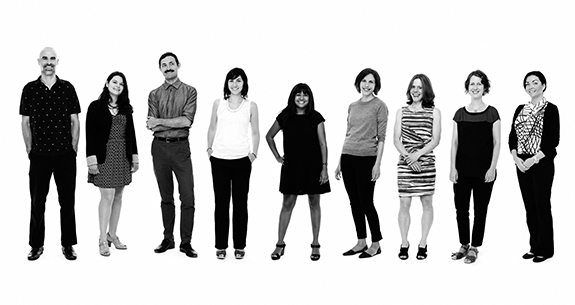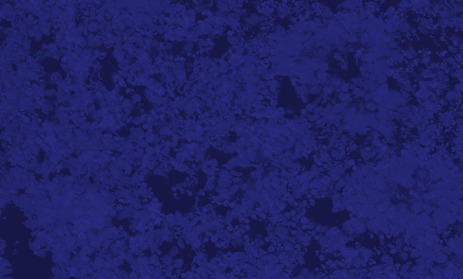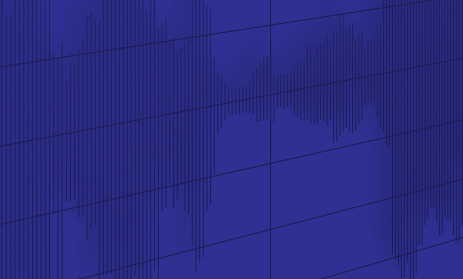
The Spectrum team in 2015, from left to right: M. Amedeo Tumolillo, Jessica Wright, Greg Boustead, Nicholette Zeliadt, Apoorva Mandavilli, Katie Moisse, Ingrid Wickelgren, Hope Vanderberg, Ashleigh Richardson
In less than a second, a Google search for 'autism research' returns 68 million results. A search for 'autism research news' returns 39 million results. Such an incredible amount of information can be hard to parse when trying to learn more about autism spectrum disorder and what research is revealing about it — even for practicing scientists.
In 2015, confirming its commitment to providing autism scientists —
and the interested public — with accurate and comprehensive autism research news, the
Simons Foundation launched the editorially independent online publication Spectrum.
Spectrum is a sleek, informative news site defined by its ambitious coverage, in-depth articles and eye-catching art. The site's design, developed by Brooklyn-based creative agency Madwell, gives the articles, especially Spectrum's long-form feature stories, called "Deep Dives," room to breathe. "Readers can really immerse themselves in a story," says Apoorva Mandavilli, the site's editor-in-chief.
The site traces its history to autism research news coverage originally appearing on simonsfoundation.org and then on SFARI.org, the website of the Simons Foundation Autism Research Initiative. "The goal of the news coverage was to provide a single place where scientists could keep abreast of their field without having to sift through dozens of scientific abstracts each week," Mandavilli says.
SFARI.org's coverage of autism research news quickly quickly gained attention: The site's traffic doubled each year from 2008 to 2014, as did its output. By 2014, the home page was overflowing with content — journalistic news and opinion pieces were posted alongside announcements for SFARI funding opportunities and research resources. As SFARI.org grew, Mandavilli started thinking about what a site focused entirely on autism research news might look like and how it could be used to catalyze new research collaborations and novel perspectives on autism. By 2014, it was an idea ready to be made a reality, as SFARI decided that the autism research news coverage deserved its own real estate.
Spectrum launched in September of 2015. Within weeks, tens of thousands of readers came to the new site to read freelancer Ingfei Chen's Deep Dive "Wide Awake: Why Children With Autism Struggle With Sleep." The article's success, just before the site's debut at the annual Society for Neuroscience meeting in Chicago, helped to mark the magazine's auspicious entry into the world of online science journalism, and there were more successes to come. Senior news writer Jessica Wright's feature "The Missing Generation" won third place in public health reporting in the Association of Health Care Journalists' excellence awards contest, and Mandavilli's piece "The Lost Girls" won first place in the trade publication category. Mandavilli's story was also chosen to appear in the 2016 edition of the anthology The Best American Science & Nature Writing.
"We are off to an incredible start," Mandavilli says, "and we are excited to continue to establish ourselves as a leading source of autism
research news."
Francesca Happé, professor of cognitive neuroscience at King's College London, calls Spectrum a beacon on the Internet. "Among autism scientists, it's absolutely the go-to place."
RECOMMENDED READING LIST
I. Chen. "Wide awake: Why children with autism struggle with sleep." Spectrum.
Published online October 7, 2015.
A. Mandavilli. "The lost girls." Spectrum. Published online October 19, 2015.
J. Wright. "The missing generation." Spectrum. Published online December 9, 2015.





